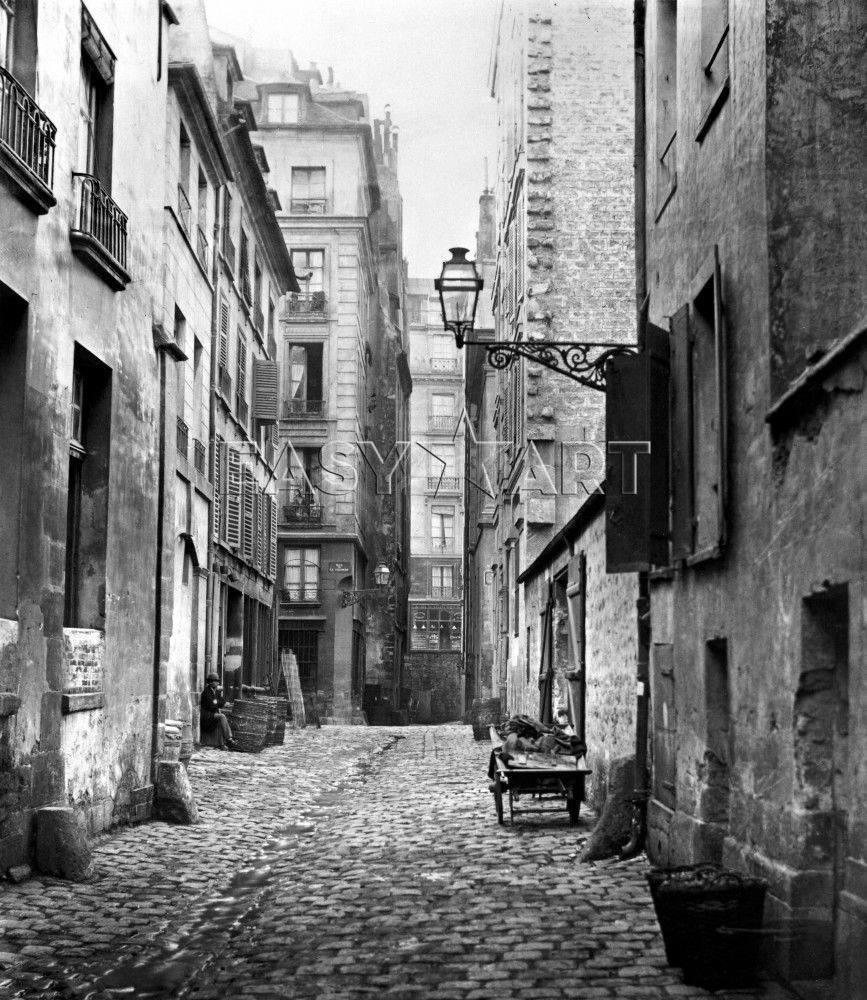
Paris' Hairy Bottom Street

The original village, built on a mound above the riverside swamp, had been named Beaubourg (Pretty Place) in a spirit of medieval sarcasm. Three of the nine streets in which Louis IX had allowed prostitutes to operate were in Beaubourg, which had once had the rudest street names in Paris: Rue Maubuée (Dirty Washington Street), Rue Pute-y-Muse (Streetwalker Street), Rue du Poil-au-Cul (Hairy Bottom Street), Rue Gratte-Cul (Arsecatcher Street), Rue Troussevache (Cowshagger Street), Rue Trousse-Nonnain (Nunfucker Street), and Rue Tire-Vit (Cocktugger Street), where Mary Queen of Scots was said to have asked her guide, "What street is this?" to which the guide had euphemistically replied, "Rue Tire-Boudin, Your Highness." And "Tug-Sausage Street" it remained until the 1800s, when it was renamed Rue Marie-Stuart.. . . The Plateau Beaubourg was now a parking sauvage. The rectangular patch of wasteground was used by motorists and by truck drivers serving the local shops. Painted transvestites and other creatures of the night hung around until they were replaced, just before dawn, by the muscular unemployed, looking for odd jobs at what remained of the markets.
In the days when buildings were thought to be incurable carriers of disease, the area had been designated Ilot insalubre n. 1. It was the first of seventeen Unhygienic Precincts identified by government commissions in 1906 and 1919. In 1925, Le Corbusier had produced a plan --- sponsored by a car company --- that would deal with insalubrity once and for all. Much of the Right Bank would be flattened and the "tubercular" buildings (and all other buildings too) would be replaced by eighteen cruciform towers. East-west arteries would allow motorists to cross what had once been Paris in a matter of minutes. Le Corbusier's secretary, who came in from the suburbs, would never be late for work again. The plan had been shelved, but the idea remained as a dream: Paul Delouvrier, the Haussmann of the suburbs, who had discovered Paris from the driving seat of his Studebaker convertible, decreed that Parisians should be able to travel about their city at 50-60 kph.
Several streets in Unhygienic Precinct No. 1 had been swept away in the 1930s as part of the programme of rationalization and sanitation, leaving the area of wasteground, which every night was carpeted afresh with broken glass, condoms, and hypodermic needles.
This was the site that Pompidou had chosen for a cultural centre and modern art museum. ("It has to be modern art because we already have the Louvre," he explained.) Six hundred and eighty-one teams of architects had submitted designs of bewildering variety: a cube, a bent prong of glass and metal, a discombobulated rhombus, an inverted pyramid, a giant egg, and something resembling a waste-paper basket. The winning design was compared to an oil refinery, which pleased the architects. It made radical use of steel, plastic, and colour-coded utility tubes: green for plumbing, yellow for electricity, blue for ventilation, red for hot air. Specially designed seats, ashtrays, and noticeboards were an integral part of the design, until they were stolen as souvenirs. Best of all, there was to be an escalator running up the outside in a perspex sheath.
Most of the local inhabitants were not opposed to the new building. "Who wants to live next to that?" they would ask, pointing at the neighboring slum from their own section of Unhygienic Precinct. They looked forward to the oil refinery. It would "regenerate" the quartier. All the money went to the west of Paris, and it was high time that the east enjoyed some prosperity. There would be new shops and better drains, and the cafés would once again be full of cheerful customers heaping scorn on the municipal authorities, the President, technocrats, artists, builders, tourists, and the young.
--- From Parisians
Graham Robb
©2010 W. W. Norton and Company